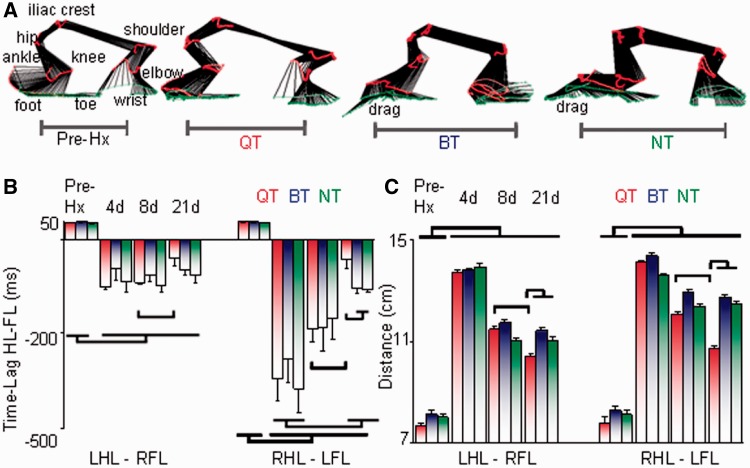Figure 4.
Quadrupedal step-training is effective in improving forelimb-hindlimb coordination. (A) Stick diagrams (30 ms between sticks) for a representative rat pre-hemisection (Pre-Hx) and from one rat per group at 21 days after a hemisection during the stance phase of a single step cycle illustrating the coordination patterns between the right hindlimb (RHL) and left forelimb (LFL) during quadrupedal stepping at 21 cm/s. (B) Bar graphs representing the lag times between the onset of the left hindlimb (LHL) and right forelimb (RFL) and between the right hindlimb and left forelimb contact on the treadmill during quadrupedal stepping at each time point. (C) Histograms depicting the horizontal distance between the left hindlimb and right forelimb and between the right hindlimb and left forelimb during quadrupedal stepping. After hemisection, the distance between the hindlimb and forelimb increases because of hindlimb drag, decrease in the knee height, and irregularities in the ratio of the number of forelimb steps for every 10 hindlimb steps (Fig. 2). Values in B and C are means ± SEM for ∼10 steps/rat. Note that in B and C the quadrupedal step-trained (QT), bipedal step-trained (BT) and non-trained (NT) groups are significantly different from pre-hemisection at all time points and that the quadrupedal step-trained group is different at 21 days versus 8 days. Additionally, in both B and C, the quadrupedal step-trained group is different than both the bipedal step-trained and non-trained groups at 21 days.

